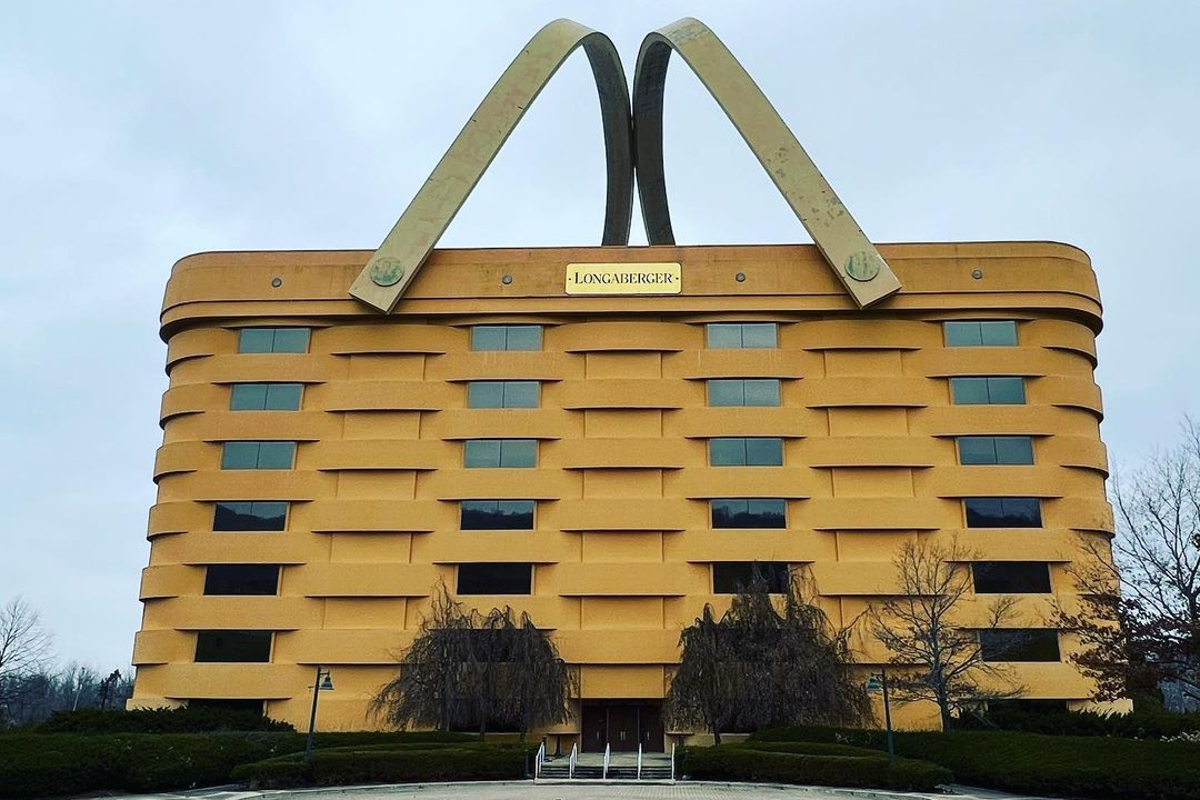16 Weirdest Buildings in the U.S.
The United States is home to some of the world’s most iconic architecture, from the towering skyscrapers of New York City to the sprawling estates of the West Coast. However, nestled among these well-known landmarks are buildings so unique, so utterly bizarre, that they demand a second look.
Here, we delve into some of the weirdest buildings in the U.S., each with its own story and a distinct place in America’s architectural landscape.
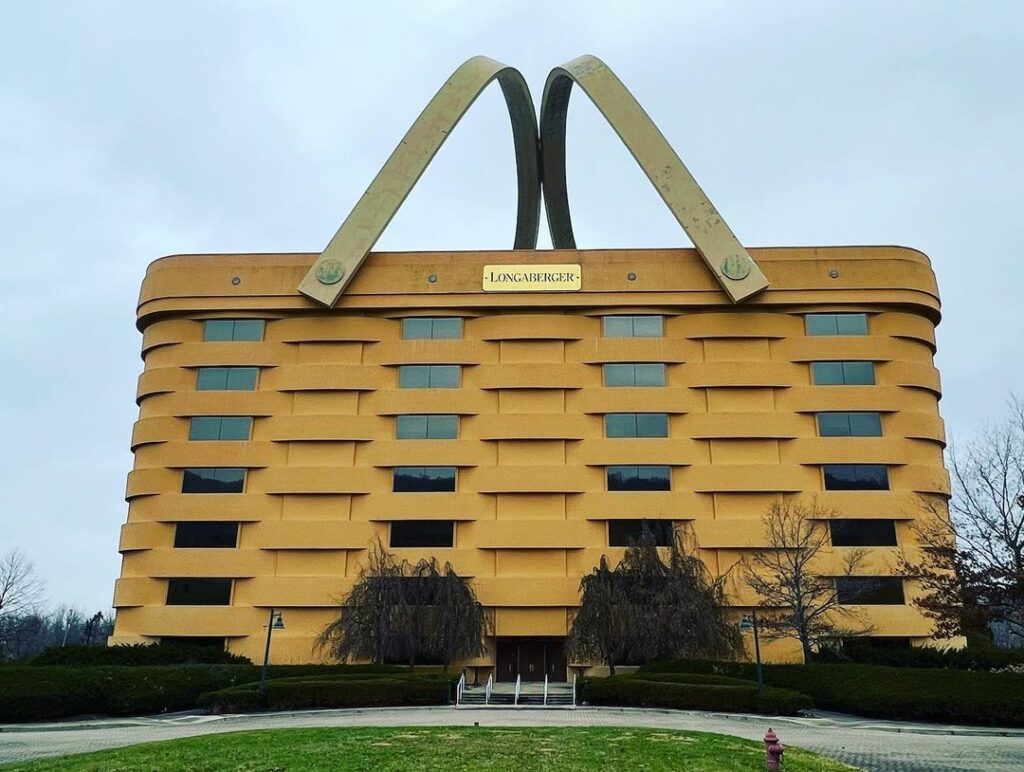
The Basket Building | Newark, Ohio
Imagine a giant picnic basket, complete with handles, towering over the landscape. This isn’t a scene from a whimsical storybook but the reality in Newark, Ohio. The Basket Building, formerly the headquarters of the Longaberger Basket Company, is a striking example of novelty architecture.
Designed to mirror the company’s handcrafted baskets, this building is a testament to the brand’s commitment to its craft, albeit on a much larger scale.

The Corn Palace | Mitchell, South Dakota
The Corn Palace in Mitchell, South Dakota, redefines the concept of a multipurpose facility. Decorated with thousands of bushels of corn and other grains, the exterior murals are redesigned and replaced annually, making it a living piece of art.
Originally established in 1892 to showcase the region’s rich agricultural heritage, the Corn Palace serves as a venue for concerts, sports events, and exhibitions, all within walls that pay homage to the humble ear of corn.
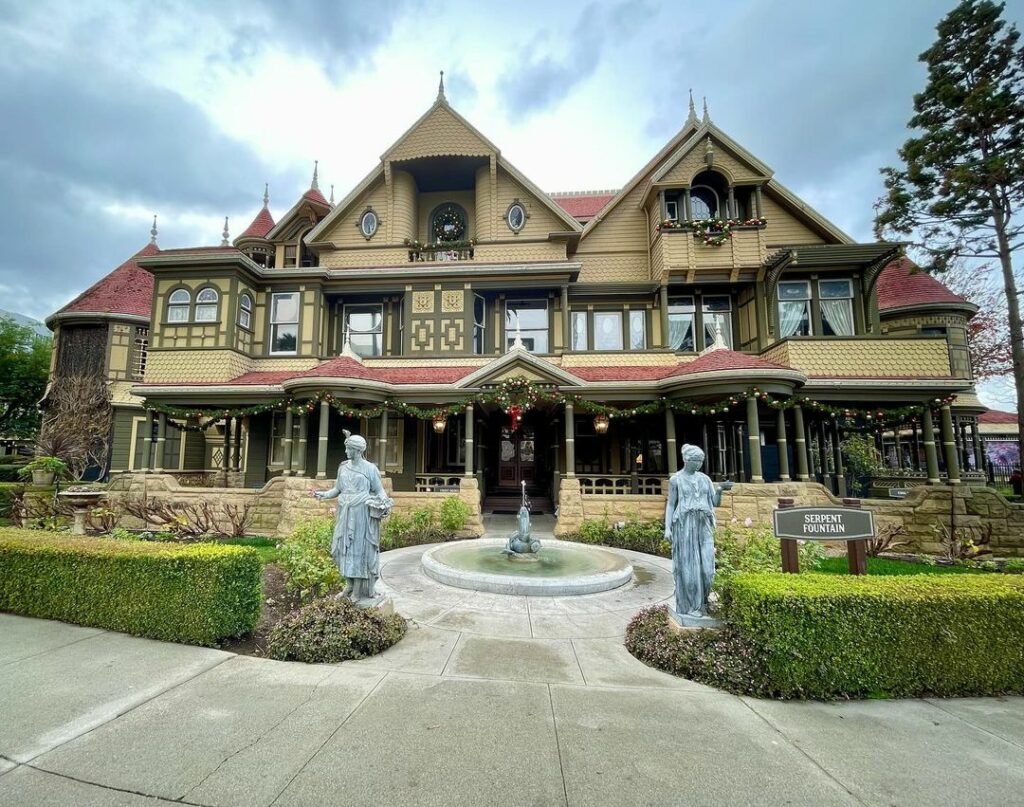
The Winchester Mystery House | San Jose, California
The Winchester Mystery House is as famous for its architectural oddities as it is for its ghost stories. Built by Sarah Winchester, the widow of firearm magnate William Wirt Winchester, this sprawling mansion was under continuous construction for 38 years.
It features staircases leading nowhere, doors that open into walls, and windows overlooking other rooms, all allegedly designed to confuse the spirits that haunted her family.

The Spaceship House | Signal Mountain, Tennessee
Perched atop Signal Mountain, the Spaceship House looks like it’s straight out of a science fiction movie. Built in 1973 by Curtis King, this futuristic dwelling features a retractable staircase, reminiscent of a spacecraft’s entry ramp, and an interior that stays true to its extraterrestrial exterior.
While it might not be ready to blast off, the Spaceship House offers a unique glimpse into 1970s futurism.

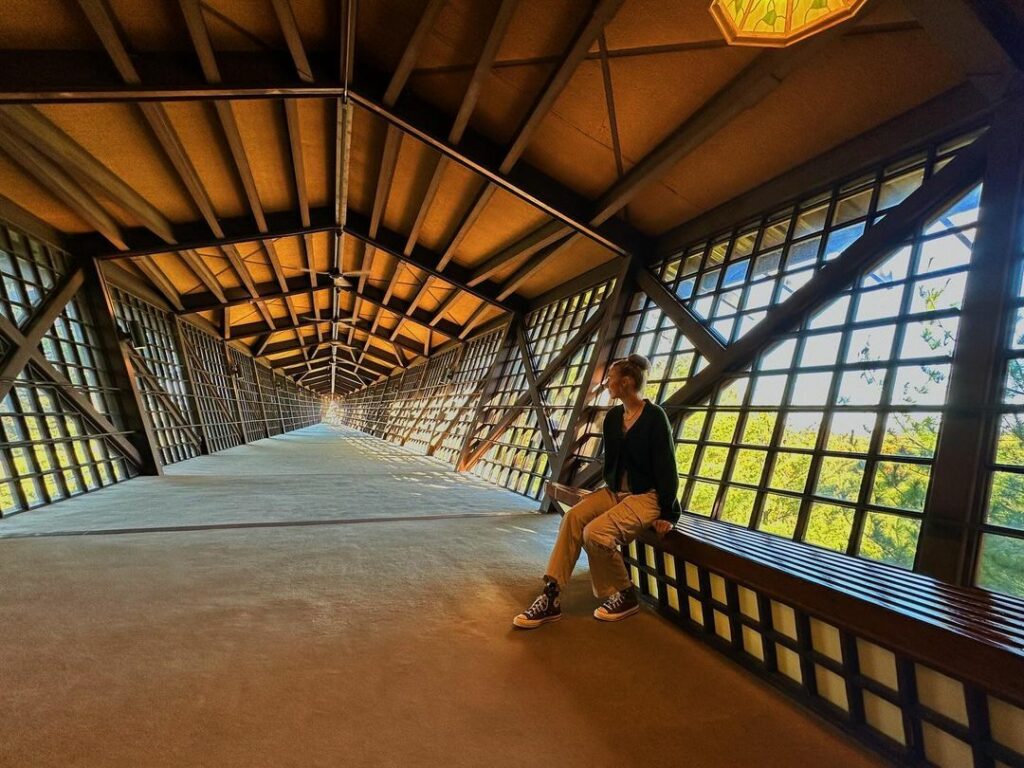
The House on the Rock | Spring Green, Wisconsin
The House on the Rock is a marvel of eccentricity and grandiose imagination. Built by Alex Jordan Jr. as a personal retreat, it quickly evolved into a sprawling complex filled with eclectic collections, from the world’s largest indoor carousel to a room filled with automated music machines.
The Infinity Room, jutting out 218 feet over the valley without support underneath, offers breathtaking views and a sense of walking into the void.

The Dr. Seuss House | Talkeetna, Alaska
Nestled in the remote wilderness of Alaska is a tower that seems to have leaped from the pages of a Dr. Seuss book. Officially known as the Goose Creek Tower, but affectionately dubbed the “Dr. Seuss House,” this whimsical structure stacks multiple cabins on top of one another, reaching into the sky like a fairy tale come to life.
Built by attorney Phillip Weidner, the tower’s eccentric design and remote location add to its mystique, making it a curious landmark in the Alaskan wilds.
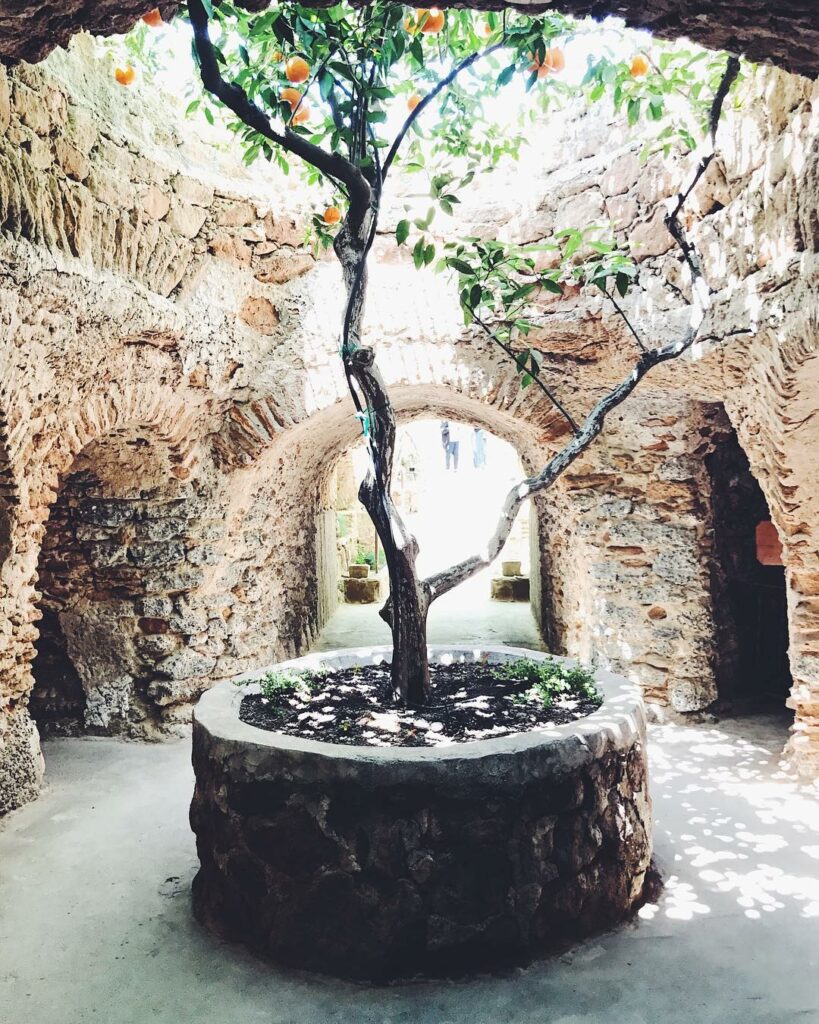
The Forestiere Underground Gardens | Fresno, California
The Forestiere Underground Gardens offer a glimpse into the ingenious mind of Baldassare Forestiere, an immigrant from Sicily who spent 40 years carving out a subterranean network of rooms, courtyards, and passageways.
Inspired by the ancient catacombs and designed to escape the Central Valley’s scorching heat, this underground oasis features fruit-bearing trees and grapevines that thrive beneath skylights carved into the earth. This hidden gem showcases a unique blend of architecture and horticulture.
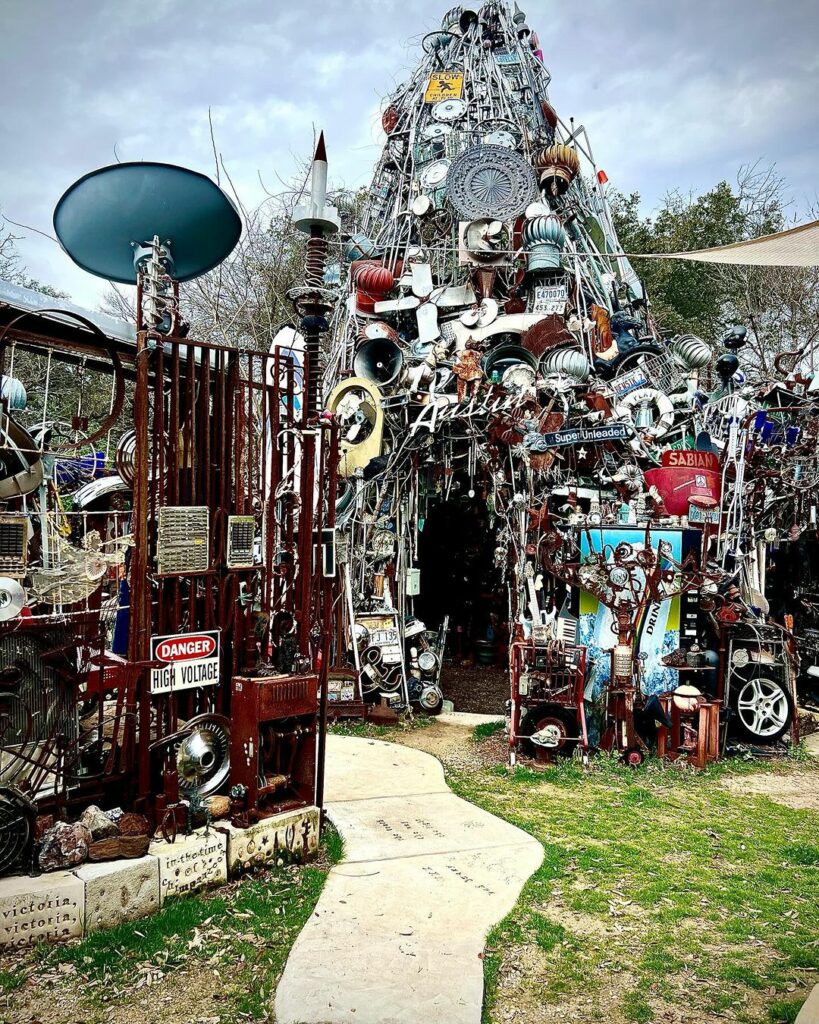
The Cathedral of Junk | Austin, Texas
In the heart of an Austin suburb lies the Cathedral of Junk, a towering testament to one man’s dedication to turning trash into treasure. Vince Hannemann has been constructing this eclectic masterpiece since 1988, using everything from bicycle parts to old electronics.
The structure, complete with its own “throne room,” is a constantly evolving piece of art that invites visitors to explore its nooks and crannies, all while pondering the line between junk and genius.
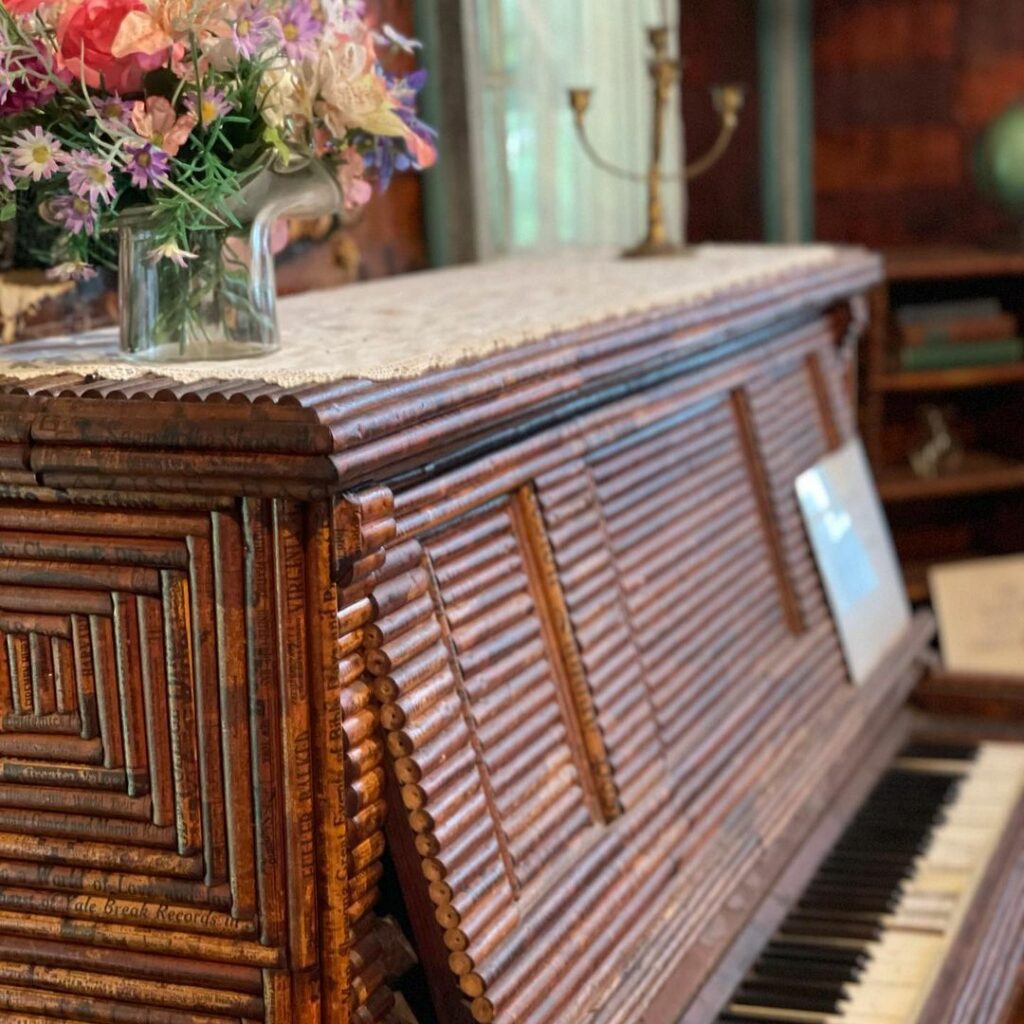
The Paper House | Rockport, Massachusetts
The Paper House in Rockport stands as a monument to the unconventional. Built in the 1920s by mechanical engineer Elis F. Stenman, the house, including its furniture, is constructed almost entirely from newspapers.
Originally intended as a summer home, the Paper House showcases the strength and durability of paper when layered and varnished. Visitors can marvel at the detailed furniture and even read the newsprint still visible on the walls, offering a tangible slice of history.

Salvation Mountain | Niland, California
Salvation Mountain is a vibrant, man-made mountain in the Colorado Desert, created by Leonard Knight as a tribute to God and his message of love. Covered in an estimated 100,000 gallons of paint, the mountain features biblical quotes, flowers, trees, waterfalls, and the heart-shaped “God Is Love” mantra at its summit.
This folk art monument, constructed from adobe, straw, and lead-free paint, stands as a colorful testament to one man’s devotion and has become a pilgrimage site for visitors from around the world.
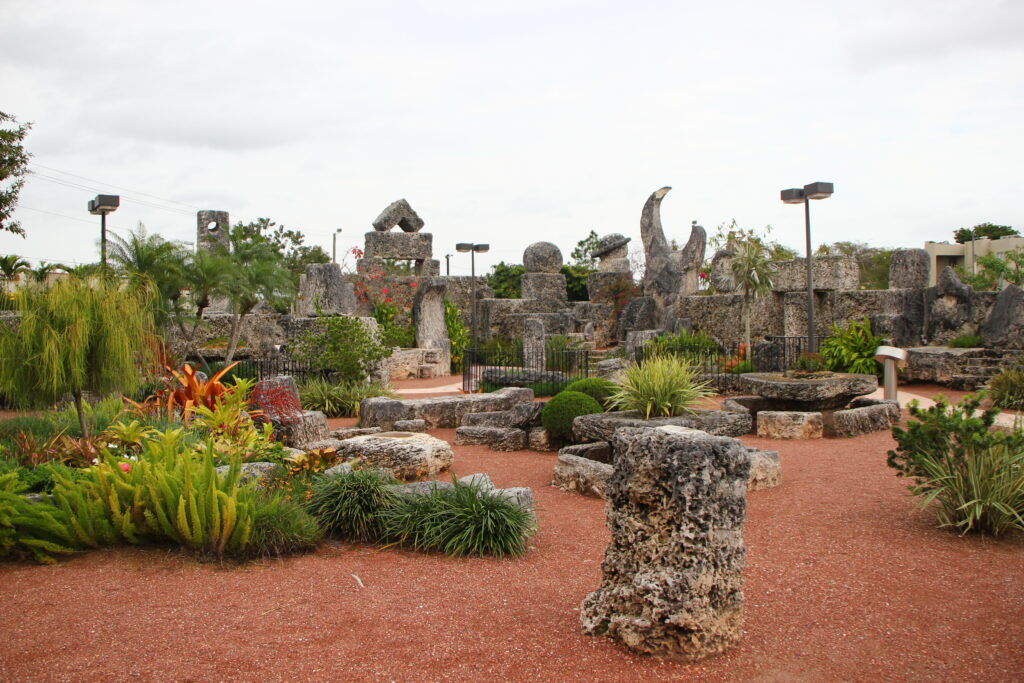
The Coral Castle | Homestead, Florida
The Coral Castle, located just south of Miami, is a mysterious monument to lost love, hand-carved by a single man, Edward Leedskalnin, from over 1,100 tons of coral rock. Built between 1923 and 1951, this architectural marvel includes massive stones forming walls, a tower, furniture, and a working gate so perfectly balanced it can be opened with a finger.
The methods Leedskalnin used to construct the castle remain a mystery, leading to speculation about the use of ancient building techniques or unknown technologies.
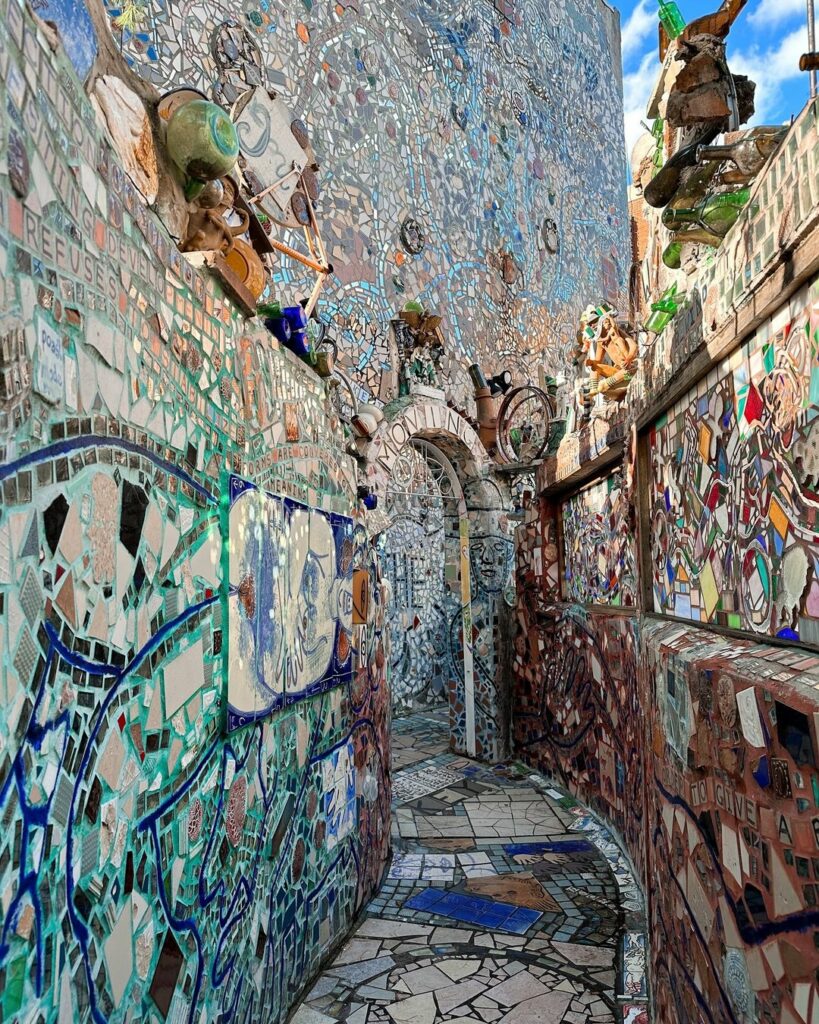
The Magic Gardens | Philadelphia, Pennsylvania
Philadelphia’s Magic Gardens is a fantastical art environment created by mosaic artist Isaiah Zagar on South Street. Spanning half a block, this immersive gallery and community space is adorned with mosaics made from ceramic shards, mirrors, bottles, bicycle wheels, and other found objects.
The Magic Gardens is a testament to the power of recycling and creativity, offering visitors a kaleidoscopic journey through tunnels, grottos, and a colorful outdoor maze.
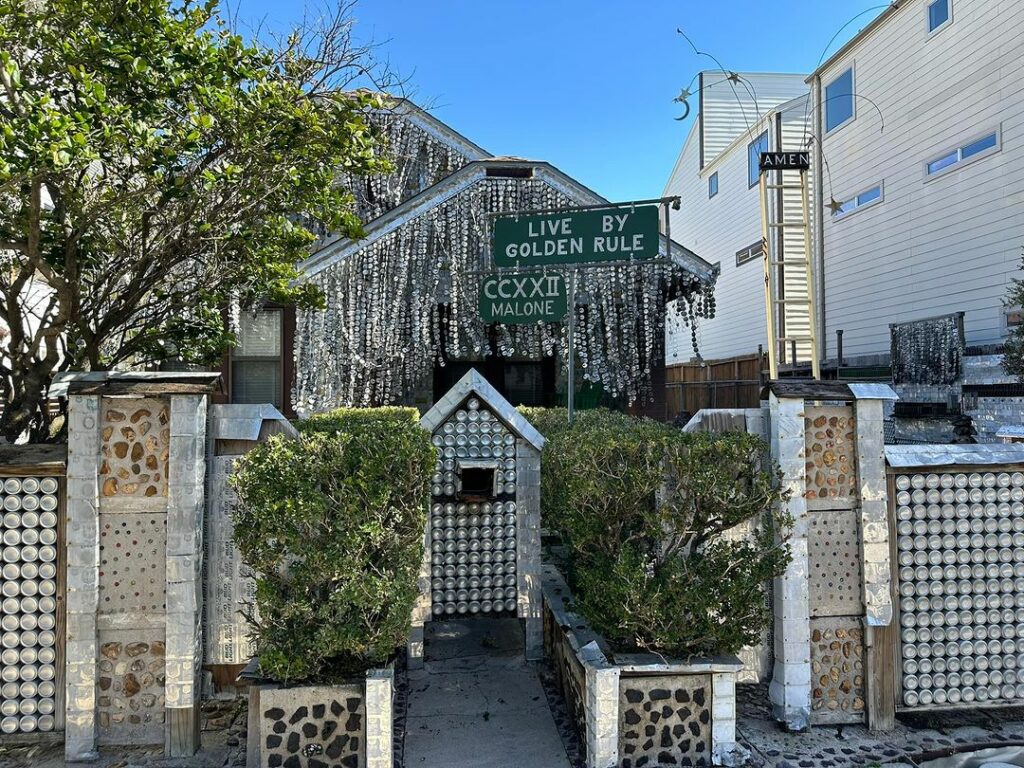
The Beer Can House | Houston, Texas
The Beer Can House is a testament to one man’s love for beer and his unconventional approach to home decoration. Starting in 1968, John Milkovisch, a retired upholsterer for the Southern Pacific Railroad, began covering his house with beer cans, lids, and other beer paraphernalia.
Over 18 years, he adorned his home with over 50,000 cans, transforming it into a shimmering, clinking work of folk art that reflects the sunlight and captures the imagination of all who visit.
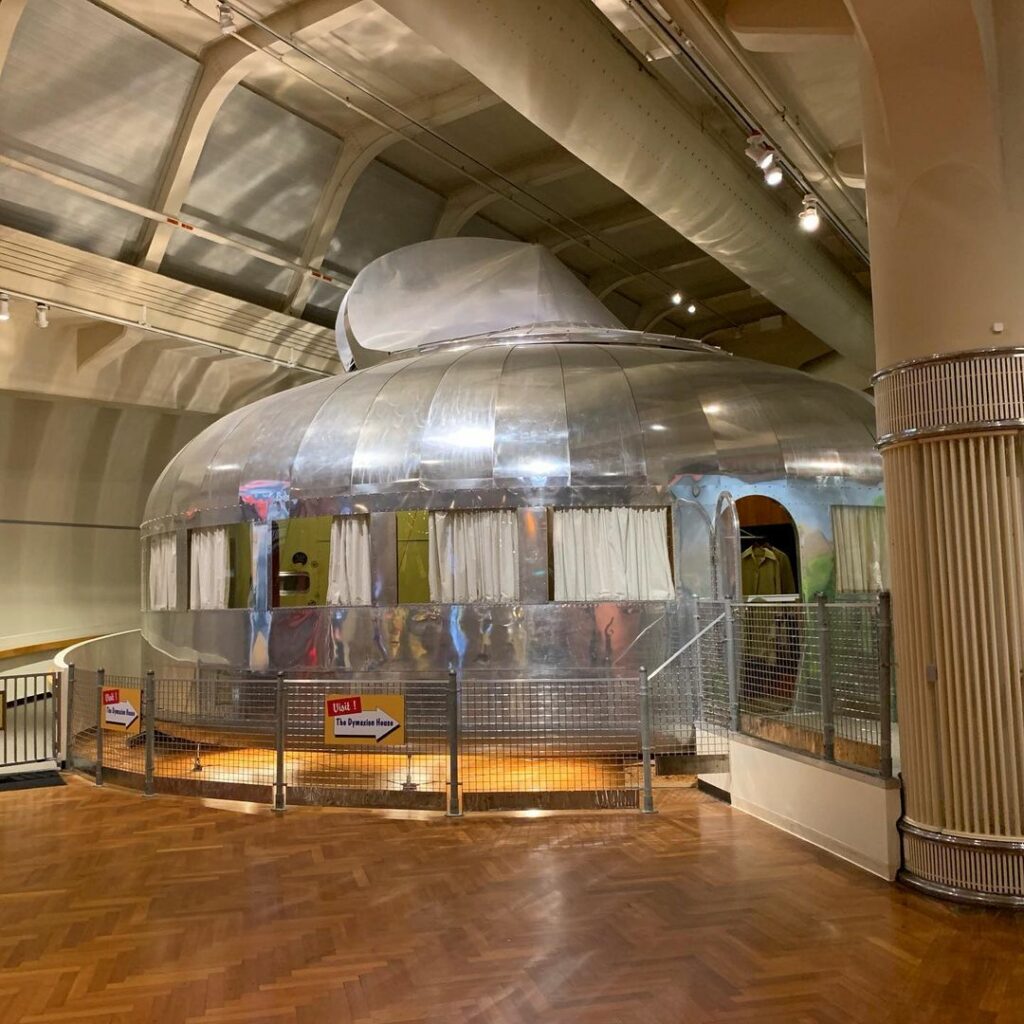
The Dymaxion House | Dearborn, Michigan
The Dymaxion House was inventor Buckminster Fuller’s solution to the post-World War II housing shortage, designed to be the home of the future. It is the only surviving prototype of Fuller’s vision for mass-produced, affordable housing that could be easily shipped and assembled.
Made of aluminum and shaped like a dome, the Dymaxion House features innovative ideas such as revolving closets, a ventilating system that also cools and heats, and a tension-suspension structure. Today, it is displayed at The Henry Ford Museum in Dearborn, offering a glimpse into a future that might have been.
The Enchanted Highway | Regent, North Dakota
While not a building, the Enchanted Highway presents a series of the largest scrap metal sculptures in the world, stretching 32 miles from Gladstone to Regent, North Dakota. Created by local artist Gary Greff to promote tourism and prevent his hometown from dying out, these sculptures depict subjects ranging from “Geese in Flight” to “The Tin Family,” each piece more imaginative than the last.
This open-air gallery transforms the landscape into a whimsical journey, making the Enchanted Highway a unique architectural endeavor that redefines what constitutes a “building” by integrating art directly with the environment.
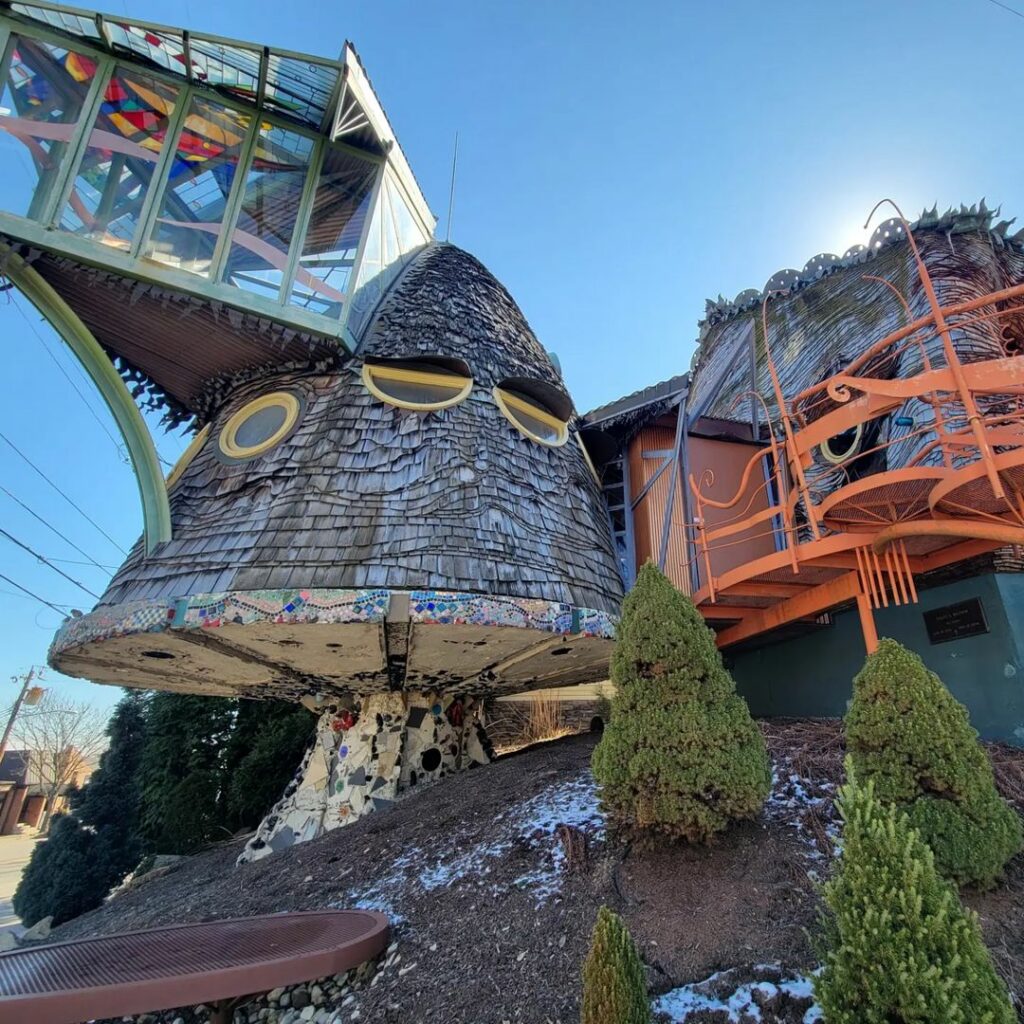
The Mushroom House | Cincinnati, Ohio
The Mushroom House, also known as the TreeHouse, in Cincinnati, Ohio, stands as a testament to organic architecture’s whimsy and wonder. Designed by architect Terry Brown and his architecture students, this unique structure features a blend of materials, including wood, colored glass, and shell.
Its distinctive shape and design elements make it resemble a mushroom growing out of the ground, offering a fantastical escape from the ordinary suburban landscape.
Explore the Weirdest Buildings in the U.S.
These buildings, with their unique designs and stories, contribute to the rich tapestry of American culture and architecture. They remind us that creativity knows no bounds, and sometimes, the weirdest ideas can lead to the most memorable landmarks.
Whether inspired by personal whims, corporate branding, or the desire to defy convention, the weirdest buildings in the U.S. are a testament to the nation’s architectural diversity and innovation.

